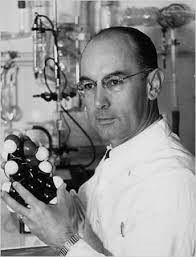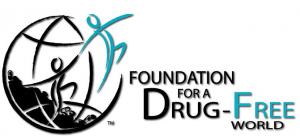While LSD has made a quiet comeback, Foundation for a Drug-Free World is exposing its dangers to a new generation

Albert Hoffmann, the inventor of LSD, worked for a pharmaceutical company where he developed the drug.
Surprising statistics show high schoolers are using LSD and that even 2% of 8th graders admit to using it.
Among students, 5.9 percent of high school seniors in the United States admitted to using LSD at least once in their lifetime, according to the University of Michigan’s Monitoring the Future Survey. More shocking is that 2.1 percent of 8th graders admitted to using LSD in their lifetimes.
What can be done about this?
Getting informed about the dangers of specific drugs is directly tied to a decline in usage of that drug, according to almost 40 years of statistics and analysis done by the Monitoring the Future Study. The study found that knowledge of LSD is declining with youth. This signals a possible problem in the future as LSD is made available.
In the 1960s and 1970s, many young people took LSD. Famously, Art Linkletter, a longtime radio and television host of such programs as People Are Funny, lost his daughter, Diane, who leaped to her death at the age of 20 in 1969. The Linkletter family were convinced that this was due to the influence of LSD. Thereafter, Linkletter campaigned against drugs heavily, leading a significant campaign against drugs starting in 1971.
New research has been done on LSD. According to the journal Neuropsychopharmacology, in 2017 there were six studies on LSD done. In those studies, over 50% of subjects showed negative effects from LSD. “Acute adverse effects up to 10–24 [hours] after LSD administration included difficulty concentrating, headache, dizziness, lack of appetite, dry mouth, nausea, imbalance, and feeling exhausted. Headaches and exhaustion may last up to 72 hours,” reported one study.
It should be noted, this is under controlled clinical settings. Another study of various clinical trials reported, “Concerning safety, the administration of classical hallucinogens carries some risks. One of them is the so-called ‘bad trip’ or ‘challenging experience,’ described as an acute state of anxiety, dysphoria and confusion, which can lead to unpredictable behavior in uncontrolled or unsupervised environments. Another possible risk is the exacerbation of psychotic disorders or the generation of prolonged psychotic reactions, which could be related to the subject's previous predisposition.” Research like this is controlled with subjects being confined to a hospital or lab so adverse effects can be managed. However, with recreational use of LSD there can be dangerous and harmful consequences.
Why is LSD dangerous?
LSD causes an extreme change in mood. That can be pleasant for some users and terrifying for others. The problem is that you don’t know how you will react – terrified or relaxed.
The user has little sense of reality; for instance, one user was pulled over by police while driving during an LSD trip. He was going 5 miles an hour on a bridge and had no sense that he wasn’t driving the speed limit with the rest of the cars. This type of reaction not only endangers the user, but others in their environment. The ability to make sensible decisions may leave the user.
One LSD user explained what happened to her. She said, “While high on LSD I felt like there was a huge distortion both in my mind and body. The visual changes as well as the extreme changes in mood were like some strange scary trip—one in which I felt like I had no control over my mind and body.”
The Foundation for a Drug-Free World is making these dangers known in community meetings, briefings and online events.
To help spread the truth about LSD, the Foundation for a Drug-Free World has a free booklet and free online course to answer questions about LSD and educate people on its dangers.
The Truth About LSD is a free booklet that has detailed information about LSD and explains why this drug is dangerous. Accidental deaths have been reported from those on LSD who then can’t think straight or suffer from hallucinations which causes them to put themselves in danger. And some suffer adverse effects long after coming off the drug.
The Foundation for a Drug-Free World works with many groups to educate the public about LSD and other drugs. Their educator package contains practical tools to educate young people about substance abuse. This is available for free to teachers and educators. Parents and community members can download the free booklet and watch a short video on the truth about drugs.
The Foundation for a Drug-Free World is a nonprofit public benefit corporation that empowers youth and adults with factual information about drugs so they can make informed decisions and live drug-free. The free booklets are used in thousands of schools and social programs to help youth with factual information about the drugs they may be offered.
Rev. Susan Taylor
Drug-Free World
+1 202-667-6404
email us here
Drug-Free World LSD PSA
Legal Disclaimer:
EIN Presswire provides this news content "as is" without warranty of any kind. We do not accept any responsibility or liability for the accuracy, content, images, videos, licenses, completeness, legality, or reliability of the information contained in this article. If you have any complaints or copyright issues related to this article, kindly contact the author above.


